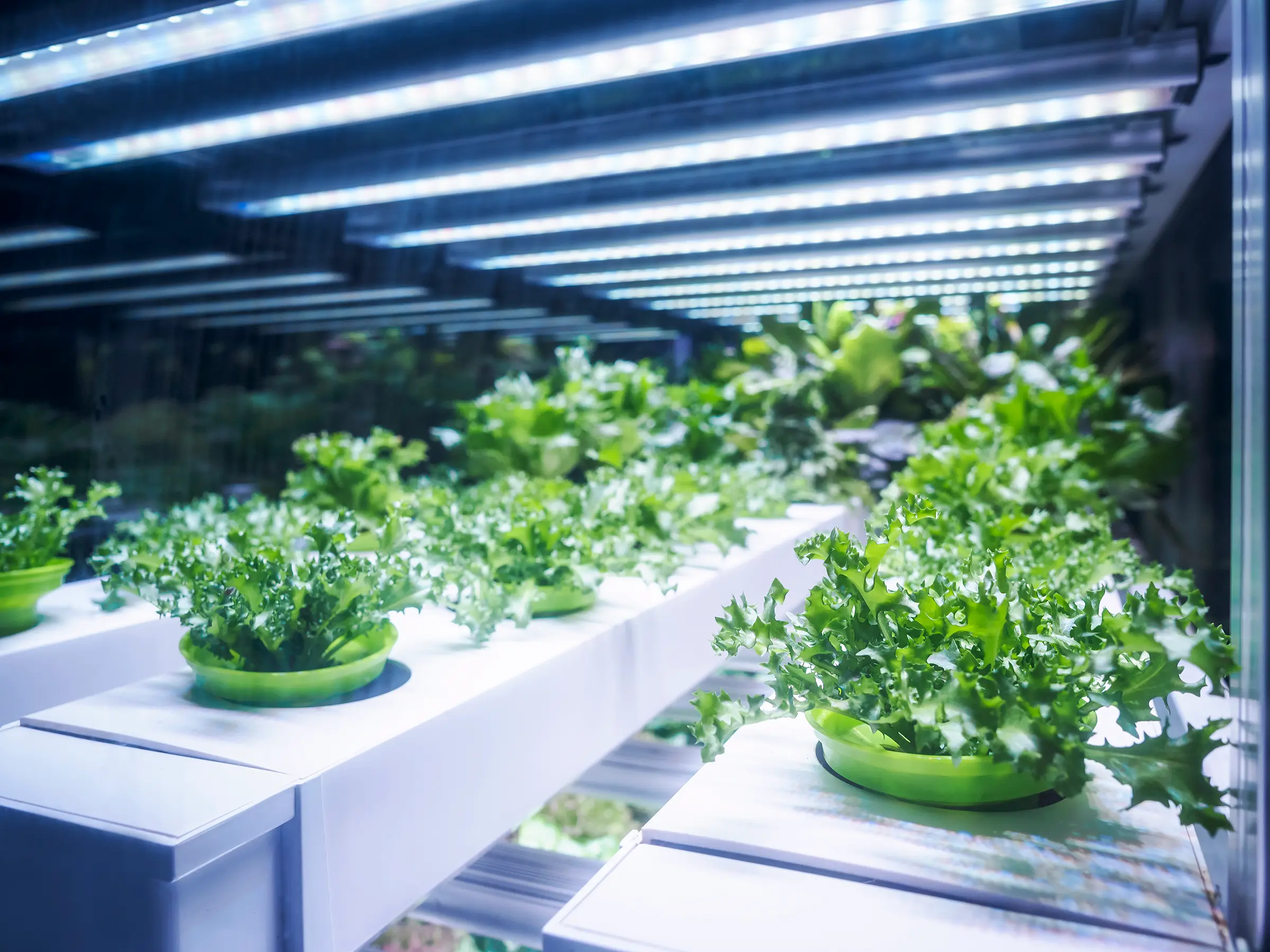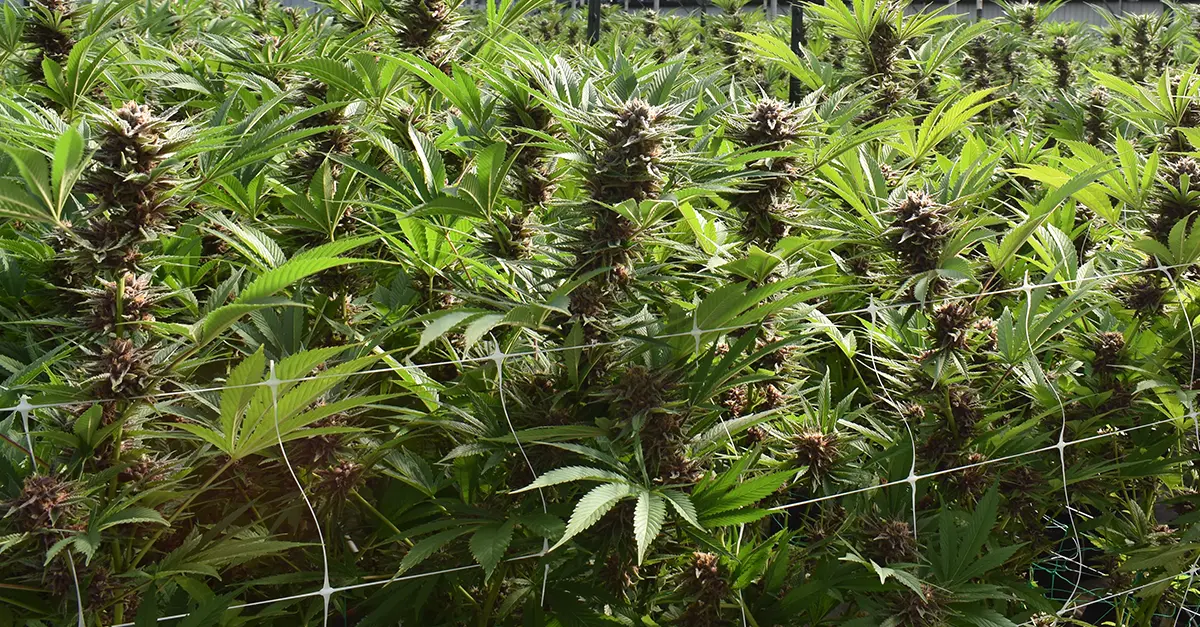Bridging the gap between growers and utilities
Controlled environment agriculture (CEA) is on the rise. Growing crops in a controlled environment isn’t a new concept (traditional greenhouses have been around for hundreds of years), but there hasn’t been a lot of public interest in CEA. That’s rapidly changing. From a utility standpoint, this is a market with huge opportunities waiting to be harvested.
Why Is CEA growing?
Our predicted population growth will add 2 billion people in the next 30 years, and available agricultural land cannot support this surge. Moreover, increasingly erratic climate events can potentially wipe out entire crops grown on agricultural land. People have developed a taste for fresh, high-quality produce regardless of the season — which traditionally requires long-distance transport — and CEA allows produce to be grown locally.
While CEA as a means of food production has many advantages, the biggest influencer in this field has been cannabis cultivation.
Most states in the U.S. have legalized cannabis cultivation and consumption for medical purposes. Nearly half of U.S. states have legalized recreational cannabis for adult use, and more states are considering its recreational legalization. In fact, only three states still consider cannabis fully illegal.
States benefit with more tax income, and the high demand in this new market inspired many people to start businesses as CEA cannabis growers. The margins for return on investment are high, but they can be greatly improved by energy-efficient practices that yield daily operational savings.
Let’s take a look at what CEA is and discuss the important role utilities have in guiding energy efficiency for this expanding market.
What Is CEA?
This method of growing crops relies on technology to modify the surrounding environment in ways that help the crops thrive. Sometimes housed in a completely enclosed environment and sometimes under cover with additional access to sunlight or open air, CEA encompasses greenhouses, vertical farming, aquaculture, hydroponics and residential grow rooms.
The advantages of CEA include pest control, reduced chemicals, lower water usage, annual crop production and local proximity to buyers. With growing techniques, technology and grower preferences constantly evolving, we created a CEA Best Practices Group to stay on top of the industry. Learn more about the CEA Best Practices Group.
CEA grow lighting advances
Creating an ideal environment for plants to grow requires manipulating light, temperature, humidity and ventilation — all of which have energy impacts. And with many crops grown year-round, the energy use is constant.
CEA production processes: Utilities’ new fertile ground
People immediately think of cultivation when talking about CEA. However, the products move through a complicated supply chain to become marketable. By examining this whole process, untapped opportunities for utilities become apparent.
Energy is the second largest cost in CEA after labor. There’s a large bank of customers eager to cut down this cost to increase profits, yet they aren’t informed about their options. Utilities don’t know a lot about the operations in this new marketplace and the range of mechanical processes involved in the supply chain. As a company dedicated to helping utilities guide their customers to information and energy savings, here are some of opportunities we see repeatedly “left on the vine.”
Sowing new seeds
Some utilities have rebate programs for measures that are relevant to the variety of CEA process needs, but they haven’t considered applying them to this market. For example, a utility may offer rebates for commercial kitchen equipment and ultra-low-temperature freezers. Although these technologies are often found in the cannabis supply chain, the opportunity to use the rebates goes unrecognized by customers. This occurs because either the utility hasn’t performed outreach to inform the customer of the rebate, or the customer doesn’t fall within the utility’s typical eligibility guidelines.
In some cases, utilities don’t offer rebates for technologies typically used in CEA. Conversely, some CEA customers aren’t aware that technologies used in other applications, such as a heat pump, could be an ideal solution for their cultivation or retail spaces.
Our work in CEA is focused on the holistic picture. We’re helping to sow new seeds of information so utilities and customers can take advantage of untapped opportunities and make CEA a more energy-efficient, thriving marketplace.

Cultivation
Cultivation is obviously the most important step in crop production. Here, utilities can expand their incentives to address more than just lighting. In certain markets, we’ve introduced heat pumps into CEA to reduce energy use and maintain ideal temperatures, control humidity and better filter the air. Humidity levels and air filtration are extremely important in two CEA crops in particular: cannabis and tomatoes. Both of these popular crops can fall prey to powdery mildew, which can be better managed with the right HVAC equipment and air filtration systems. Offering CEA customers incentives for energy-efficient equipment like heat pumps can help lower energy use and improve grid resiliency.
Drying rooms and laboratories
Drying rooms and laboratories are areas often overlooked by utilities. Drying relies on dehumidification, which can require industrial drying equipment or fans to keep air moving. Laboratory processing is needed when cannabis flowers are pressurized and concentrated into an oil. Laboratories are very energy-intensive spaces and may also require special lighting. Incentives for the right type of energy-efficient equipment, lighting and smart controls are areas for utilities to investigate in drying rooms and laboratories.
Refrigerated or conditioned storage space
When the cannabis flower is made into an oil, it’s stored in ultra-low-temperature freezers cooled to -80 degrees Celsius. These spaces demand a huge load – an average-size freezer room uses as much energy as an average home. Other production methods use walk-in and reach-in refrigerators to store cannabis or farm produce. Sometimes these spaces are in rooms adjacent to the cultivation setting, yet utilities have missed these opportunities to provide knowledge and incentives for substantial energy savings.
Packaging and retail spaces
The last lines of the supply chain include packaging and retail spaces. Utilities can support customers’ business objectives and reduce energy usage with incentives on HVAC equipment and controls that enhance occupant comfort and on LED lighting for product displays.

Lauren Eagan
As senior solutions manager, Lauren researches and prototypes exciting, innovative, and efficient technologies and services for utility customers, with a focus on controlled environment agriculture (CEA) and underserved communities. She has consulted across the country on customer-centric program design and CEA and has published papers on several emerging technologies



